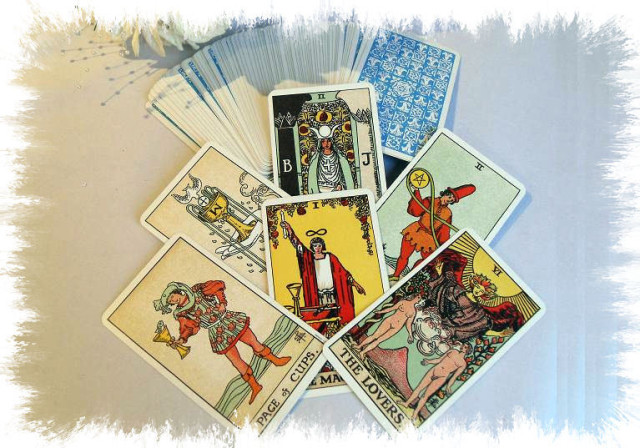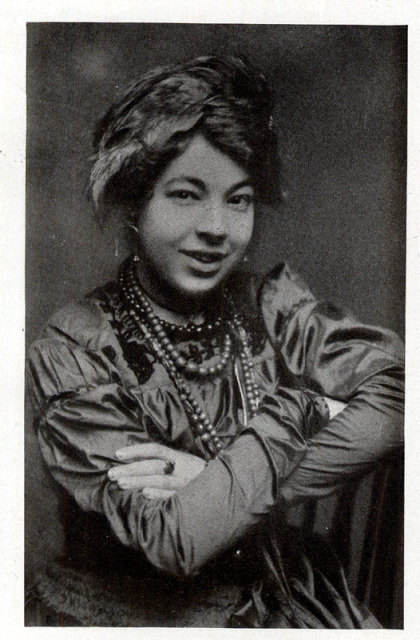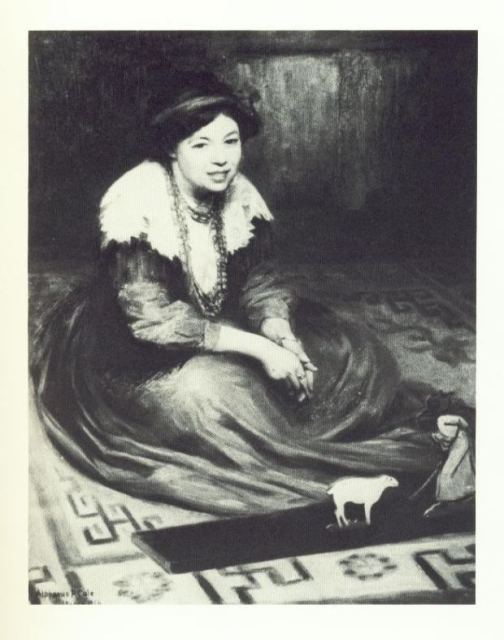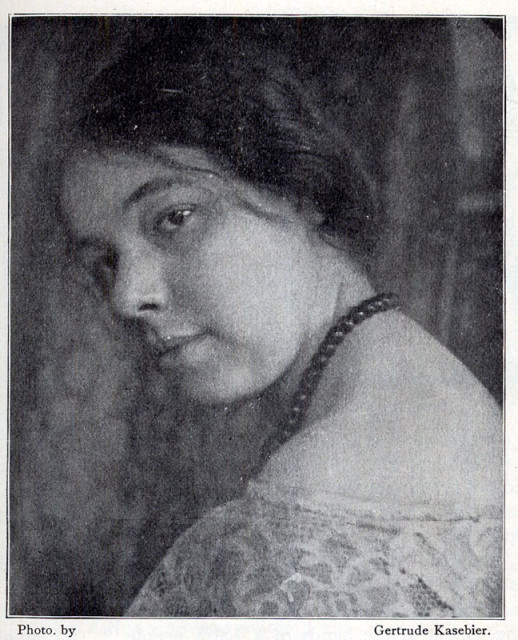Fool’s Journey: The Fascinating Life of Pamela Colman Smith
For those who don’t know the name, Pamela Colman Smith, she’s the artist behind the most popular tarot deck in the western world, the Rider-Waite-Smith Tarot or RWS. This deck is generally referred to as the Rider Waite Tarot, omitting Colman Smith’s name.

via spiritwalkercrystals.com
As an artist, she changed the face of tarot, illustrating the world’s first “mass market” deck. And hers was one of the very first to have illustrations on every card in the deck. Her work inspired my life to take this whole different direction, and if you’re reading this, it’s probably had an impact on yours too.
Despite this, she died penniless, in obscurity, as so many women artists did and do. But she was a fascinating, truly original woman, and I want to celebrate her life and give thanks for her work in this article.

Pamela Colman Smith was born in 1878 in London and was the only child of a white American father and a Jamaican mother. She grew up moving between Manchester, London, Brooklyn and Kingston.
Her family were arty, theatrical types and after her mother died Colman Smithjoined a theatre group, spending the next five years on stage, touring the US and abroad with them. She also worked as a set designer. For a woman in the early 1900s, that must have been an incredible life. And it had a powerful influence on her work — with its bizarre costumes and often very ‘staged’ settings, many of the RWS tarot cards have a very theatrical feel. (If you’re interested in this, Rachel Pollack has an interesting section on the ‘stage card’ in her book Seventy Eight Degrees of Wisdom.)

A drawing by Colman Smith of herself (left), Edith Craig and Bram Stoker, drawn on a transatlantic crossing in 1900. She was 22 at the time.
Colman Smith studied to be an artist at the experimental, avant-garde Pratt Institute in Brooklyn but didn’t graduate — nonetheless she became an illustrator providing artwork for WB Yeats, Bram Stoker and more. Some pretty major stuff! She wrote and published several books (including an illustrated collection of Jamaican folk tales, Anancy, which is still published today) and started her own magazine. She provided the artwork for posters for all kinds of events, and exhibited her work in a prestigious gallery in New York City.
She was also a strong supporter of women’s suffrage and provided poster and cartoon artwork to the movement as part of the Suffrage Atelier, a group of political artists.

If you Google Pamela Colman Smith, you might uncover speculation about her sexual orientation. What you don’t find is pretty much anything about her romantic life. Personally, I’m certain she was as queer as nine bob note, but no-one knows for sure.
She certainly did share her household in the later years with a Mrs Nora Lake (to whom she left her entire estate), but as K. Frank Jensen points out, “…but at that time it was not unusual that two single women lived together to support each other and share expenses, without it necessarily indicating lesbianism.” Yes, one of her best friends was Edith Craig [pictured in the ‘pirates’ sketch above] who was a lesbian. Yes, her circle of friends did encompass many men and women who were homosexuals. Yes, she was eccentric. Yes, she did design feminist political posters (during her activity in the women’s suffrage movement), and finally: yes, she never did marry. Any possible intimate relationships of hers remain equally unknown.
So there you go.
Aside from the tarot deck, Colman Smith’s most notable works were ‘synesthetic,’ meaning that senses are ‘blended.’ In Colman Smith’s case, she was able to ‘see music.’ Sound and music created powerful visuals in her imagination and she was able to translate these into paintings. They’re amazing, mystical and beautiful:

Chromatic Fantasy – Bach
Illustrating the tarot
In 1901, Colman Smith joined the Hermetic Order of the Golden Dawn, a British occult society. Here she met Arthur Edward Waite, with whom she co-created the Rider-Waite-Smith Tarot, and Aleister Crowley, creator of the Thoth Tarot. The group later disbanded and Colman Smith and Waite both ended up in a splinter organisation, and meanwhile, he asked her to illustrate the tarot he had conceived.
Colman Smith was largely left to her own devices in terms of the card illustrations, particularly the minors. She was the first person to illustrate the cups, pentacles, wands and swords with actual scenes of their own, (apart from one Italian deck, The Sola-Busca, created in 1491) rather than simply showing two cups, or six swords. This was a groundbreaking idea which has changed the way many people see tarot today.
She also had her own pioneering ideas about how the cards should be read, which were very different to her occultist peers’, but which suggest a very modern approach, echoed in today’s ‘learn tarot’ books:
Note the dress, the type of face; see if you can trace the character in the face; note the pose… First watch the simple forms of joy, of fear, of sorrow; look at the position taken by the whole body… After you have found how to tell a simple story, put in more details … Learn from everything, see everything, and above all feel everything! … Find eyes within, look for the door into the unknown country.From “Should the Art Student Think?” published in The Craftsman, July 1908
The deck was published first by Sprague and Co, and then by Rider and Son in 1909 costing six shillings. It was a Big Deal. There weren’t any mass-market tarot decks (most tarotists used the Tarot of Marseille and that was pretty rare). This was the deck that began the popularisation of tarot.
With all of this, you would think Pamela Colman Smith would be a widely-celebrated person. Shockingly, she received barely any money at all, little payment and no royalties, for the Rider-Waite-Smith Tarot deck whilst Waite, naturally, enjoyed fame and financial comfort. She made various attempts to make money throughout her life but none succeeded. In 1918 she moved to Cornwall, UK, and little is known about her from this point onwards. She died penniless in 1951.

I’m writing this post as a way of saying thank you.
Pamela Colman Smith will never know how beloved she now is in the tarot community, how many decks of her cards have been sold, how her artwork is the most often-seen in the tarot. The boss of US Games, who continue to publish her deck, says she could have been a millionaire today. As it is, her tarot deck and many of her other works are an example of women’s work and art and contributions being continually brushed under the carpet, continually undervalued, unpaid, taken for granted.
But Pamela Colman Smith was awesome. She never sold out and perhaps she had the chance to. She was a woman of colour who forged her own path in life at a time when few women were. She was an amazingly original person, a creatrix, a boundary-pusher and a mystic, and from where I’m standing, it looks like she lived an amazing life of adventure and passion.

Without her work, I wouldn’t be a tarot reader, I’m pretty sure of that. Without her work, many others reading this would’t either. Her art and vision and unpaid work opened up so many doors into tarot and was a massive part of bringing about a revolution in tarot reading that makes it so easy to learn and acceptable to practice today. I think her artwork is incredible. Mystical, dramatic, colourful, symbolic, original, beautiful, disturbing and very powerful. The look and feel of the RWS Tarot isn’t for everyone, but it’s always going to be one of my very favourites, and is my ‘home deck’ — the one I always return to when I feel lost with tarot.
I am so grateful that she lived, and that she created these amazing cards I use every day.
Amazing post!
ReplyDelete